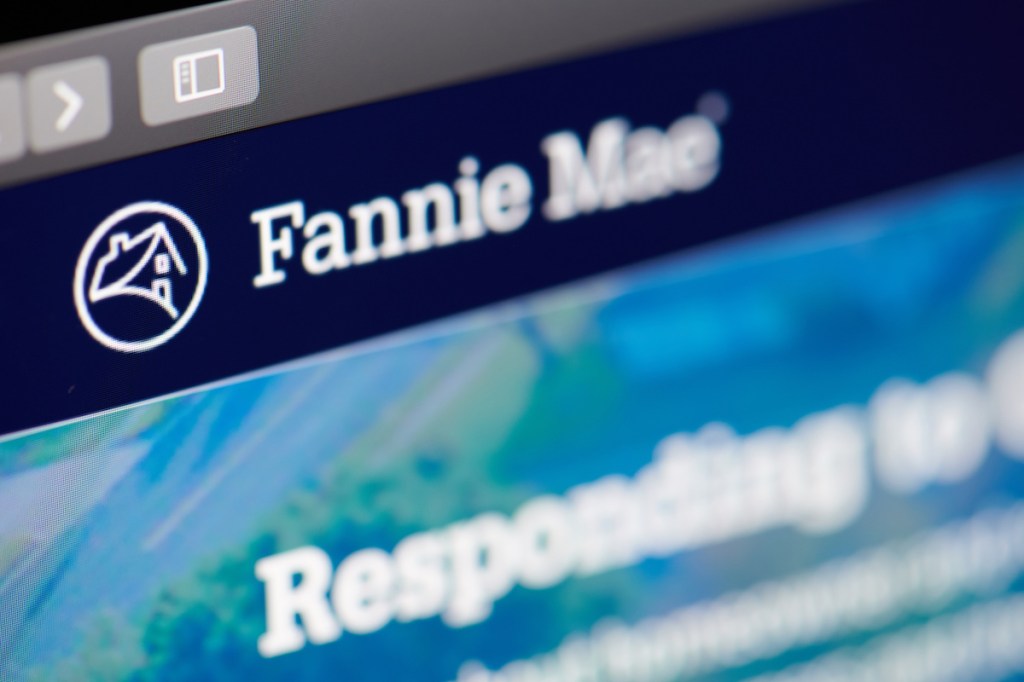The leaders of Fannie Mae and Freddie Mac sat down with Mortgage Bankers Association Chair-elect Kristy Fercho on Tuesday at the MBA Annual conference to discuss how the GSEs have managed the unprecedented COVID-19 crisis. Freddie Mac’s David Brickman and Fannie Mae’s Hugh Frater also offered their takes on challenges with affordable housing, racial disparities with homeownership, expectations for 2021 and – yes, you knew it was coming – the 50 bps refinance fee that’s due to hit lenders doing refis beginning in December.
At the virtual panel, Brickman reflected upon an “unprecedented” year in which “MBA members have really risen to the challenge.” The pandemic helped push over 400,000 borrowers to enter forbearance, and about 115,000 to exit forbearance, he said. He touted the speed with which Freddie offered liquidity to the market and embraced the use of alternative documents and signatures, and automated valuation to smooth the bumps in the road.
“The silver lining is seeing the opportunity to push forward on the digital transition that we’ve made possible,” he said, which will bring increased efficiencies to the industry.
Frater, whose company has one million homeowners in forbearance, said that the increased use of digital tools on the front- and back-end has been critical in being agile. “I hope that these will become the norm, not the exception,” he said, adding that it will largely depend on whether regulators view their use as increased risk.
How a pragmatic approach to eClosings helps lenders succeed during COVID-19 and beyond
An eClosing strategy that succeeds in any environment is built on two key concepts. Find out what those are here.
Presented by: Snapdocs
The executives weighed in on the matter of supply and access to affordable housing. “There are tremendous challenges going forward,” said Brickman. “Last year I’d say those challenges were supply related, but that’s no longer the case. The crisis is calibrated to hit those most in need.”
He said Freddie Mac was looking at ways of reducing building costs, developing ways to incentivize private investors to build affordable housing, and how to qualify more borrowers for mortgage financing. Sweat equity, accessory dwelling unit construction and manufactured/factory-build housing were also initiatives the housing giant was pursuing.
Overcoming the challenges of zoning and job opportunities are key to building affordable housing, Frater noted. “There are places with land and no jobs, and there are places with jobs and no land,” he said.
Brickman and Frater both acknowledged that systemic racism has disproportionately affected people of color. Brickman said he’s charged “every leader at Freddie Mac on how we can do more” to address systemic inequality. He said they’re working on building a more diverse workforce and creating partner networks.
Ultimately, reaching the ‘unbanked,’ people who have had limited access to build credit and buy a home, is a priority, Frater and Brickman told Fercho. “We have to manage our risk but there are different ways we can look at credit, maybe rent payments or utility payments,” said Frater.
As the virtual panel discussion was winding down, Fercho asked the GSE C-Suiters about the 50 bps refinance fee. As they had in the past, the Fannie and Freddie executives defended the decision, which was widely panned by MBA members.
“As you know, safety and soundness is one, two, and three for us,” said Frater. “And for us to play our role in all markets, good and bad, markets small and large, we have to do it safely and soundly with long-term risk management in mind. And that’s the rationale for this change, as the GSEs are shouldering significant risks associated with the pandemic — as the principal risk taker, we have to price that risk appropriately.”
He added that while the housing market has demonstrated real resiliency, “many millions of borrowers are under stress, there’s still significant risk caused by economic uncertainty both in the near term and the longer term. And we’re required by law and regulation to be compensated for these risks and these costs.”
Brickman struck a similar tone, telling Fercho that the GSEs have provided “extraordinary support” to the market.
“And certainly, part of being able to do that … we remain financially strong,” he said. “Costs have changed, risks have changed. What we put in place is an appropriate and prudent response to that change in the external environment for us to support struggling homeowners” and maintain liquidity.
They both noted that with interest rates still low, borrowers will realize savings, even with the 50 basis point refinance fee factored in. “But obviously, anybody who’s refinancing their mortgage at a lower rate is already beginning to save in terms of their mortgage payments, this only means they save just a little bit less than they would have otherwise,” said Brickman.






